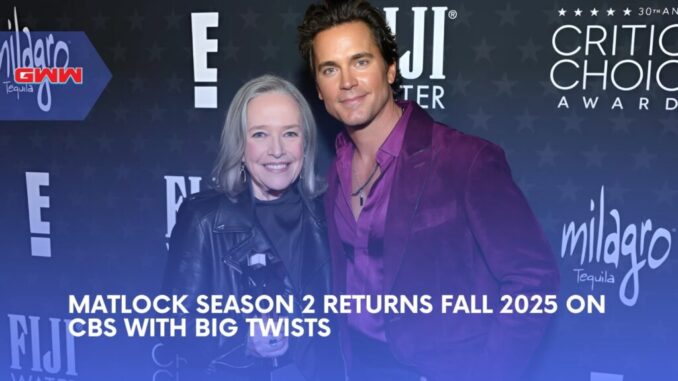
The Unseen Threads: Where You’ve Seen Kathy Bates Before Her Most Iconic Roles
Before the deranged superfan, Annie Wilkes, forced a bewildered Paul Sheldon to "hobble" in Misery, before the grotesque glamour of Madame LaLaurie captivated audiences in American Horror Story: Coven, Kathy Bates was already a force. She wasn't an overnight sensation, but rather a slow-burning star, a master craftswoman who laid down geological layers of memorable performances, each one a testament to her profound talent and the sheer, unyielding power of her presence. To truly appreciate the titans she became in her most iconic roles, one must first revisit the mosaic of characters she embodied, the unseen threads that wove the tapestry of her remarkable career.
Her journey began not on the silver screen, but under the harsh lights of the stage. A graduate of Southern Methodist University, Bates cut her teeth in New York theater, earning a Tony nomination in 1983 for her searing performance in 'night, Mother. This theatrical grounding instilled in her a formidable command of language, timing, and emotional breadth that would serve her well in every medium. These were the years of intense character work, of honing the instruments of her voice, her gaze, and her formidable stillness. While her early film and television appearances were often fleeting – a bit part here, a supporting role there – they were never truly forgettable. She possessed an inherent gravitas, a magnetic quality that drew the eye even when the script offered her only a handful of lines. She wasn't just furniture in a scene; she occupied it, infusing minor characters with an authentic humanity or a simmering intensity that suggested a rich inner life beyond the frame.
The late 1980s saw her emerge as Hollywood's quintessential, utterly reliable character actress. She was the best friend, the no-nonsense professional, the weary observer – roles that, while not always center stage, were crucial to the narrative and impossible to ignore. In Arthur 2: On the Rocks (1988), she played an unglamorous adoption agency worker, a role that could have been utterly forgettable in lesser hands, but Bates imbued her with a quiet dignity and a world-weary humor. A year later, in Danny DeVito's darkly comic The War of the Roses (1989), she delivered sharp, wry observations as a divorce attorney, hinting at the shrewd intelligence and grounded realism she would soon unleash. These were the roles where audiences would lean forward and whisper, "Oh, I know her! She's good." She was the acting equivalent of a master chef's secret ingredient – not always the main course, but essential to the flavor, providing depth and nuance that elevated the entire dish.
It was this accumulated expertise, this quiet mastery, that exploded onto the screen with Misery in 1990. Stephen King himself credited her with bringing Annie Wilkes to life in a way he hadn't fully imagined, earning her a well-deserved Academy Award. But Misery wasn't a fluke; it was the culmination. All those years of stage work, of nuanced supporting roles, of imbuing minor characters with major presence, coalesced into a performance of terrifying perfection. She knew how to build tension, how to switch from saccharine sweetness to chilling rage in a blink, because she had practiced those emotional gymnastics for decades.
Post-Misery, Bates cemented her iconic status, but her approach remained rooted in that early work ethic. She continued to choose roles that showcased her versatility, from the indomitable Evelyn Couch in Fried Green Tomatoes (1991) to the pragmatic Molly Brown in Titanic (1997), and the fiery political operative Libby Holden in Primary Colors (1998), earning another Oscar nomination. Each character, no matter how grand or understated, carried the indelible stamp of her authentic, often fearless, portrayal of humanity.
Then came American Horror Story. For a new generation, her roles in Ryan Murphy's anthology series — from the malevolent but tragically bound Madame LaLaurie to the bearded lady Ethel Darling, and the brutal Butcher — became her fresh iconography. Yet, even in these outlandish, often grotesque parts, the bedrock of her performance remained. It was the same command of character, the same ability to find the humanity within the monstrous, the same meticulous attention to detail that she had cultivated in those lean, pre-stardom years. She wasn't just playing a character; she was inhabiting them, drawing upon that deep well of experience to make the fantastical feel chillingly real.
Kathy Bates' career is not merely a trajectory from obscurity to fame, but a profound illustration of artistic evolution. We saw her before Misery and American Horror Story not as a nascent talent waiting to be discovered, but as a seasoned seamstress, meticulously stitching together a formidable body of work, thread by invisible thread. Each small part, each nuanced glance, each perfectly delivered line contributed to the powerhouse she would become. Her most iconic roles are not just standalone achievements; they are the grand, dazzling culmination of a lifetime of dedication, a testament to the fact that true greatness is often built, brick by painstaking brick, long before the world truly sees its edifice.
